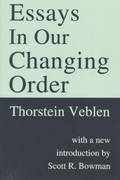Question
Problems Major problem identified is how far could CEMEX leverage its comparative advantage position in the glo Cemex is a global building materials company with
Problems
Major problem identified is how far could CEMEX leverage its "comparative advantage" position in the glo
Cemex is a global building materials company with operations in over 50 countries. The group was founded in 1906 and is located in Mexico. Its production capacity accounts for 70% of Mexico's total cement production capacity. 60% of cement products are sold to the domestic market and 40% are exported. Due to the fact that the consumption of cement in Mexico has been consistently between 20 and 25 million tons since the 1990s, the market is becoming saturated and production capacity is surplus. In this situation, Cemex began its plan to expand outward and establish multinational corporations. this brief introduction about the company. zou can find the case study online.
1. Begin with general problems with the cement industry- in both demand and supply side. Focus on OVERCAPACITY. - what did CEMEX do differently?
2. Problems focusing on mentioned regions:- keep this section as brief as possible
2.1. Peso crisis/ Mexican recession
2.2. Anti-dumping duties in USA
2.3. Spanish recession- how this helped weather the Mexican crisis
2.4. Latin America- (don't focus on this much,)
2.5. Indonesia and Egypt- not v successful because of unfavourable political climate.
3. Summarise the issues focusing on the expansion process that relates to the major problem identified. For solutions look at pg 9-12.- write more on this
We begin with a brief overview of the issues within the cement industry before delving into the specific issues that Cemex ran into.
The cement industry, akin to various sectors, faces multifaceted challenges in supply and demand. Local cement production potential is hindered by high transportation costs. Factors such as GDP, construction spending, warm climate, and population density positively impact demand, while rainfall and extensive coastlines have negative effects. Moreover, the construction sector's cyclicality adds uncertainty to medium-term forecasts. Nevertheless, Cemex found promise in retail sales for residential construction. When clubbing these supply and demand dynamics, it becomes evident that overcapacity could have serious ramifications for the industry at large. Consequently, firms sought to mitigate this risk by employing various mechanisms, including the establishment of "basing point" systems, collusion strategies, protection from imports, and government support, all aimed at fostering limited and transparent competition.
Interestingly, Cemex's idea of penetrating into diverse regions around the world to leverage a "comparative advantage" position in the global market is also its most important issue. We now discuss in detail on the identified issues starting with the home market and then the foreign markets.
Realising that a strategy of growth through acquisitions was better than horizontal diversification, Cemex began employing this first within the home market, Mexico. However, the Mexican revamp project faced a major setback due to the peso crisis and volatile political climate, but despite these challenges, the company managed to achieve reasonable results, as elaborated in the solutions section. From there on, Cemex started exporting but the imposition of trade sanctions by the United States proved difficult and tedious but Cemex managed to handle it well which we discuss further in the next section.
Acquisitions in Spain was viewed with scepticism as the worst Spanish recession hit, however, the solutions employed during this period were critical in weathering the situation back home. Parallel narratives were evident in Venezuela and Indonesia where the fluid political and economic environment impeded Cemex's success. Indeed, we observe that political instability, currency devaluation, weak institutions, and heavy red-tape posed as major hindrances to the geographical diversification project of Cemex.
As we look at the issues in a broader context, we realise that a problem that Cemex overlooked while diversifying its regional portfolio is that "'they looked at countries in a regional context rather than as independent markets." Adding onto this is the fact that Cemex examined the potential for restructuring the target company and the market as a whole while identifying a possible acquisition target which necessarily does not guarantee a positive return as it carries its own inherent risks and costs. For instance, the workforce morale and productivity could be negatively impacted if layoffs/major changes in job roles occur. Another problem that Cemex encountered was- they faced competition from prominent international players when pursuing the same acquisition targets.
Moving on to the management aspect, the asset-intensive nature of the international acquisition strategy made financing a pivotal concern, however, Cemex continued to prove otherwise as detailed in the next section. Furthermore, the organisational structure in Cemex, although applaudable, had its demerits. The lack of full fledged regional offices may have contributed to its lesser successful endeavour in the South east Asia region. We can indeed say that Cemex faced several challenges, including an unfavourable political and economic climate, coupled with language and cultural barriers. However, the most significant challenge was in the aspect of creating a wave of globalisation and determining its potential reach.
please read the case and provide me te answers to the above problems
Step by Step Solution
There are 3 Steps involved in it
Step: 1

Get Instant Access to Expert-Tailored Solutions
See step-by-step solutions with expert insights and AI powered tools for academic success
Step: 2

Step: 3

Ace Your Homework with AI
Get the answers you need in no time with our AI-driven, step-by-step assistance
Get Started


